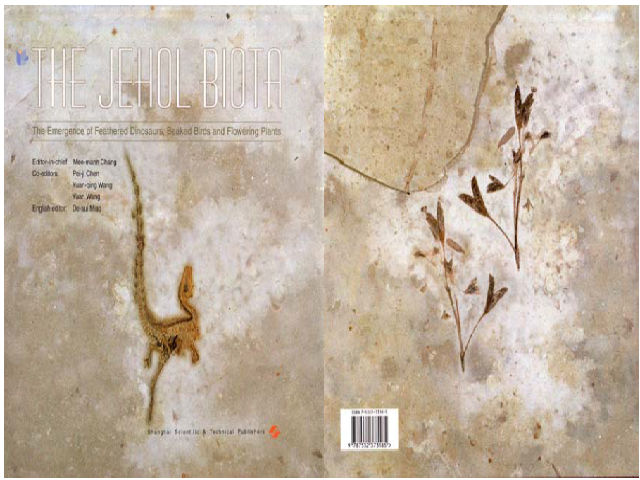Meen–mann Chang. Ed. 2003. The Jehol Biota. The emergence of feathered dinosaurs, beaked birds, and flowering plants. – Shanghai, Shanghai Scientific and Technical Publishers
Abstract
The discovery of the fossil–laden Jehol Formation (the Eosestheria–Ephemeropsis–Lycoptera fauna recovered from the Jehol Group exposed in the western Liaoning Province and vicinity, in northeastern China) has, over the past decade or so, proven to be one of the most significant events in modern palaeontology, in two ways. First, obviously, because of the staggering amounts of high–quality bird and dinosaur fossils it has yielded (see also our July 2006 Newsletter). These have rightly been the source of much discussion, and have arguably helped our insight into the descent of birds further along than any collection of fossils has ever done.
But the second effect is hardly less important: it has brought Chinese palaeontologists into much closer cooperation with their Western colleagues than was previously the case. Initially, this took the form of co–authorships. But over the last years, Chinese scientists have become more assertive and autonomous – a development reflected in the increase of their output in scientific journals. So it had to be only a matter of time before this book was published. Read more...
Downloads




